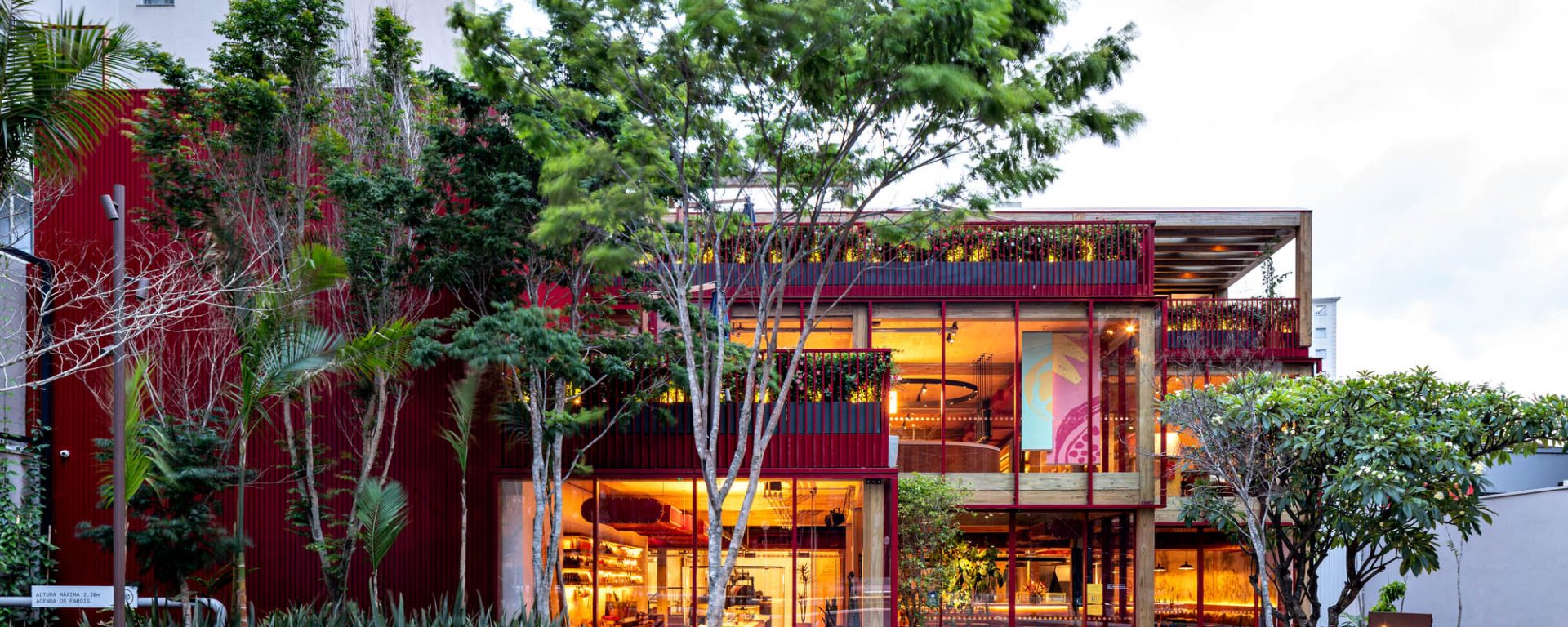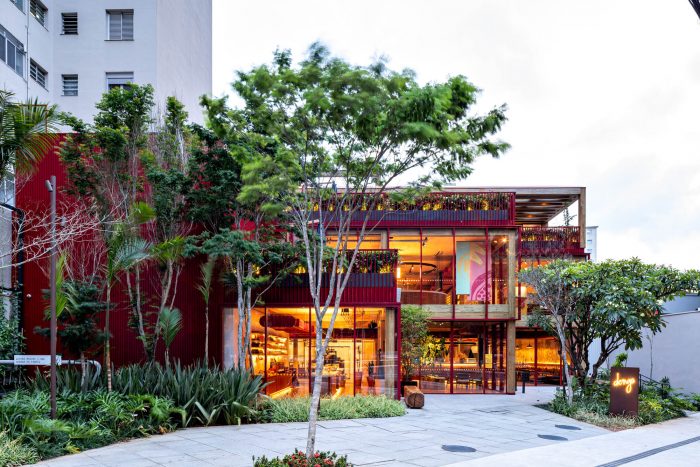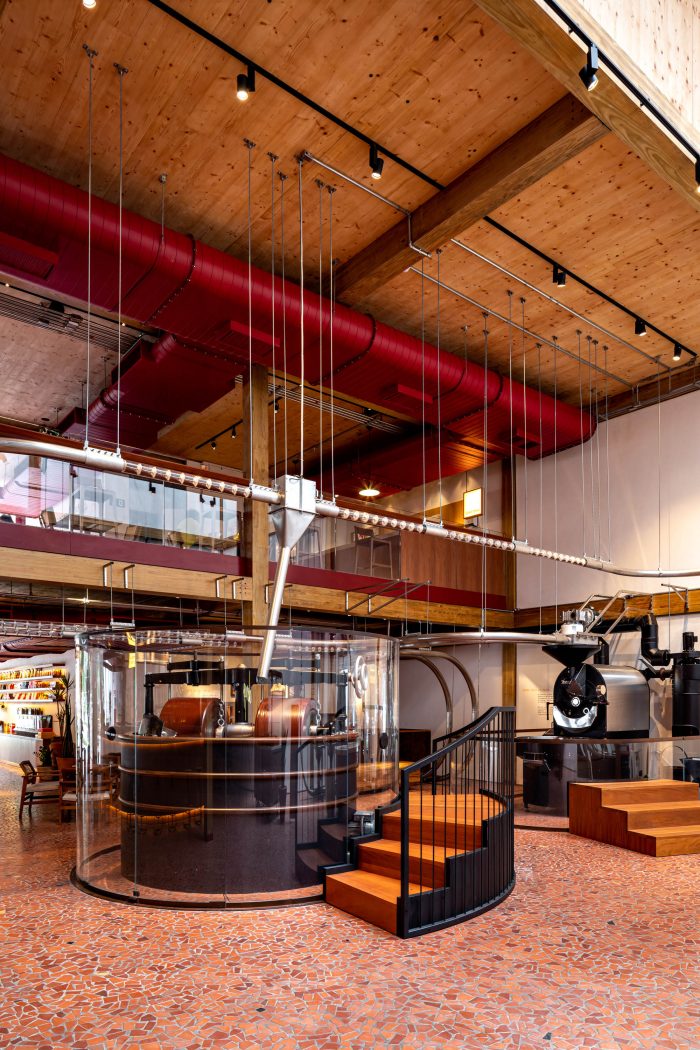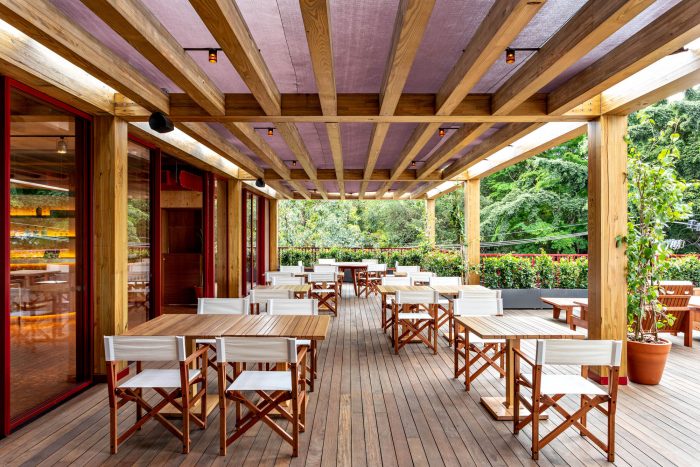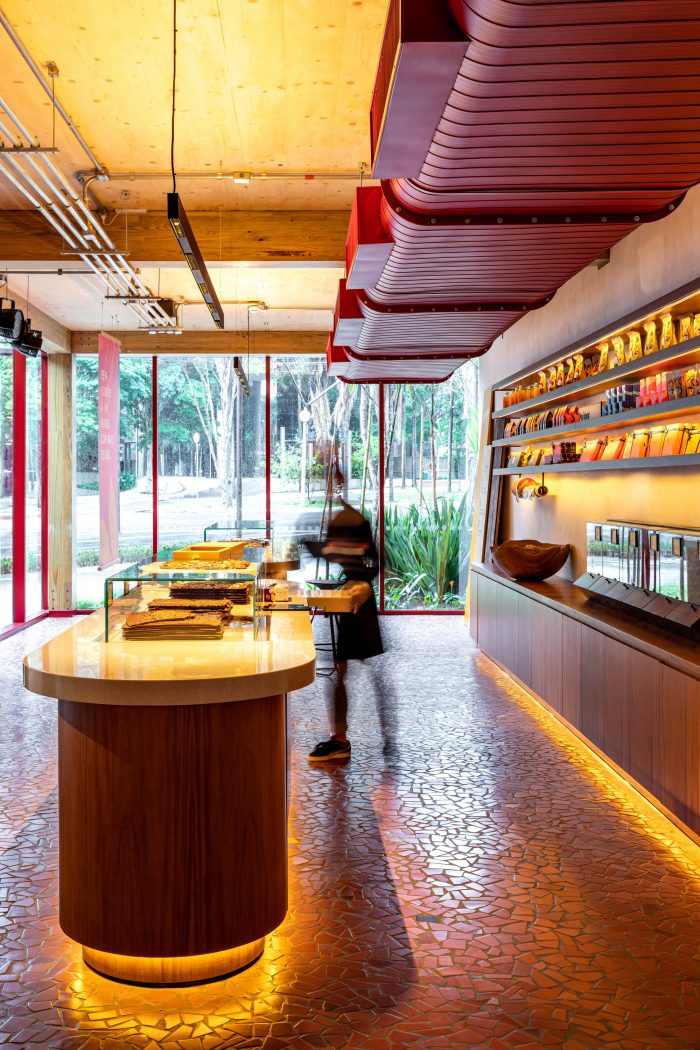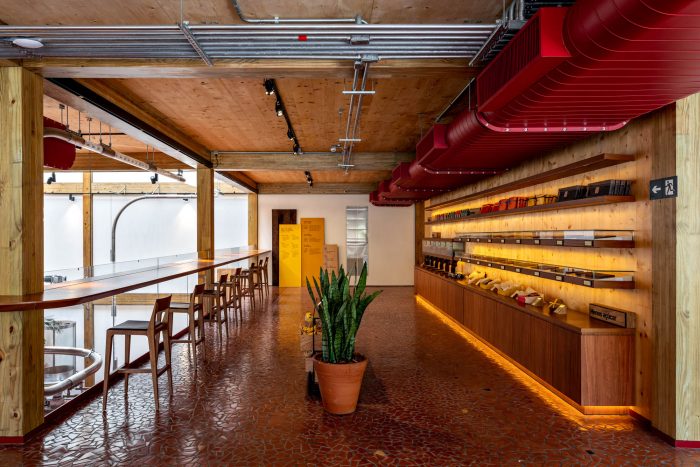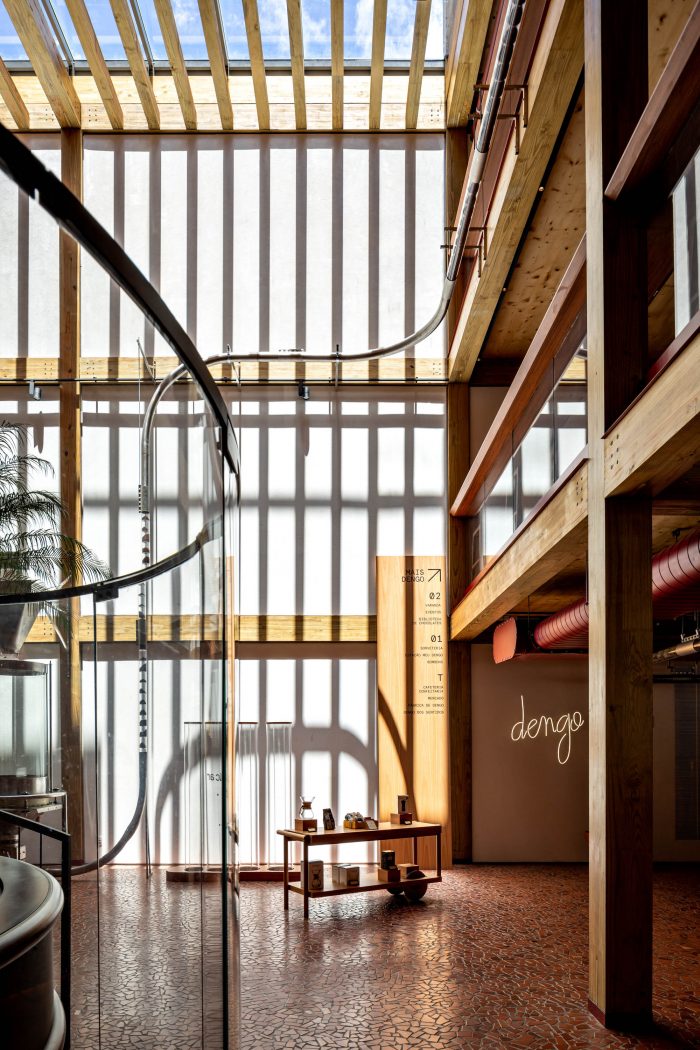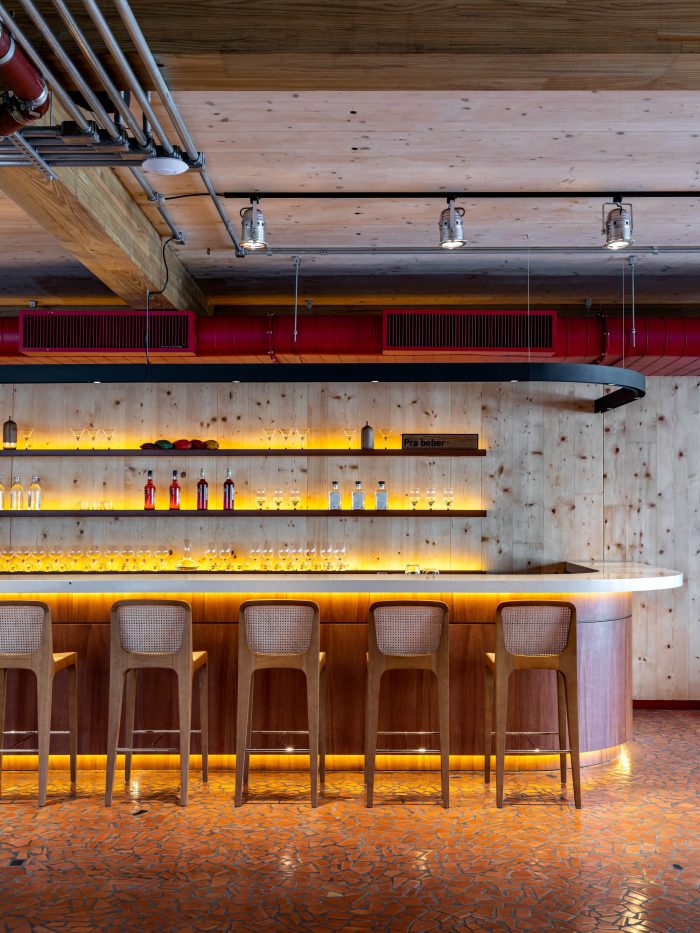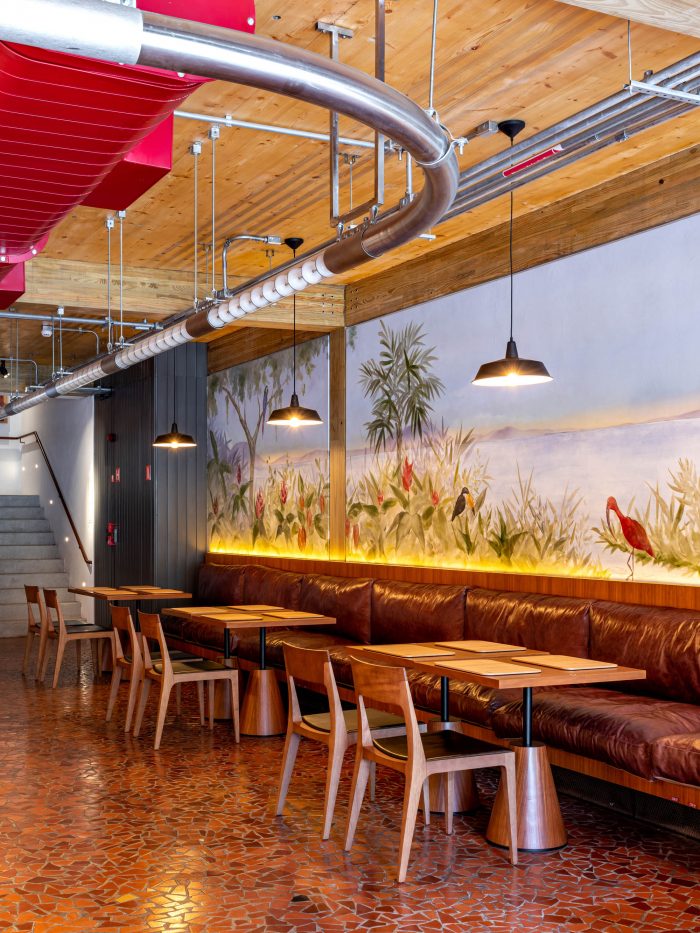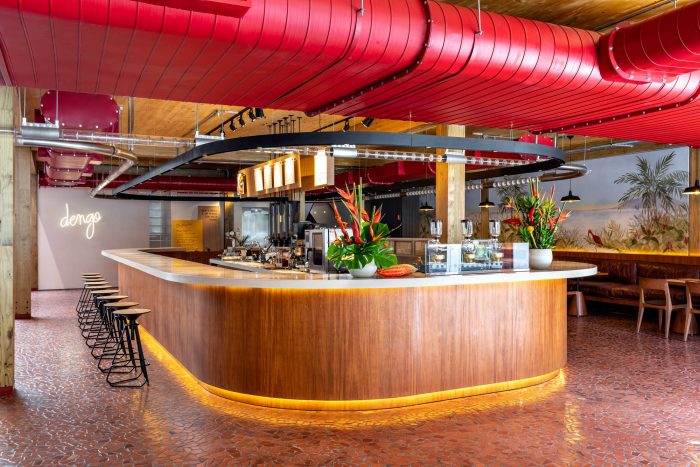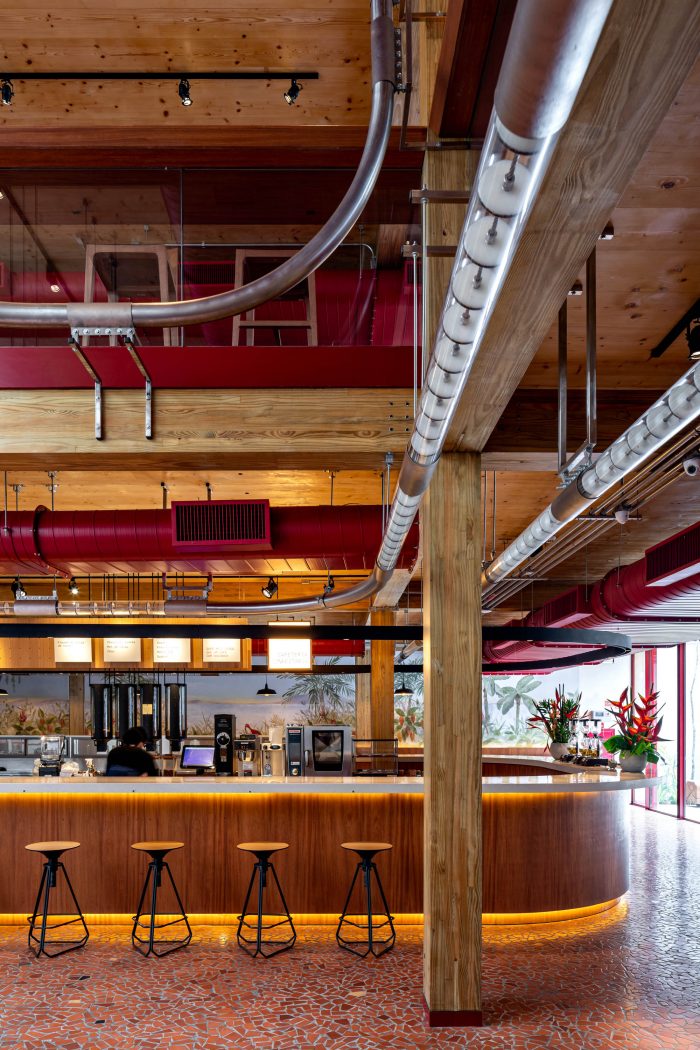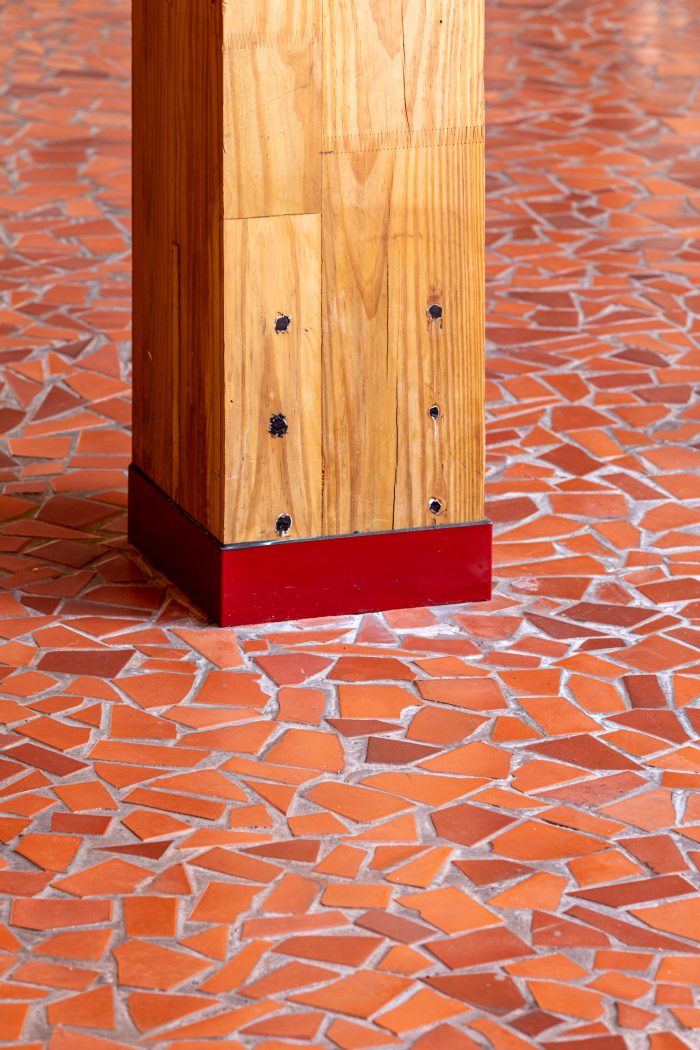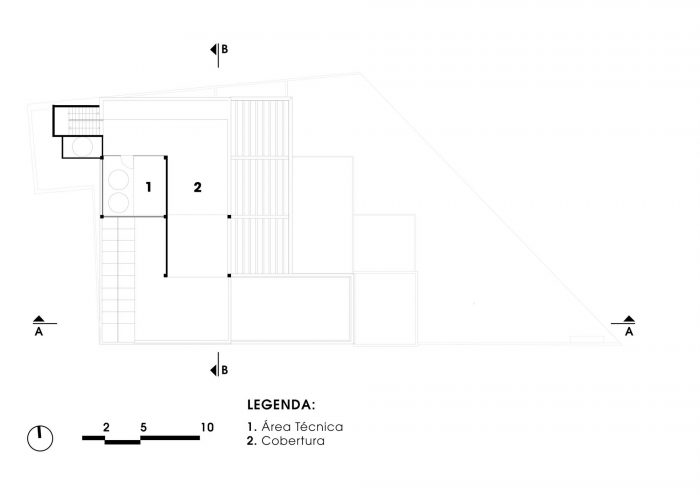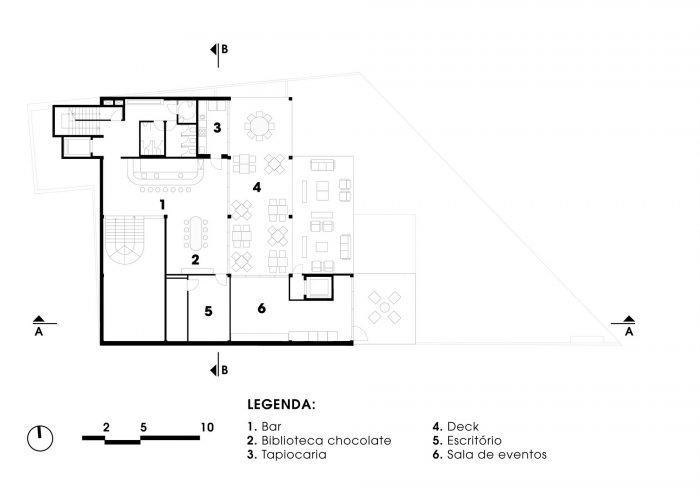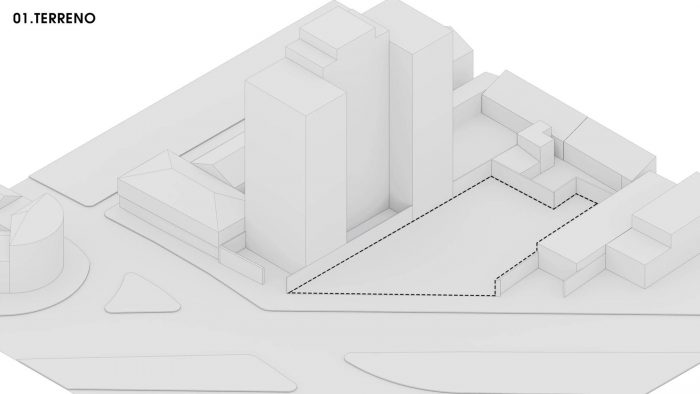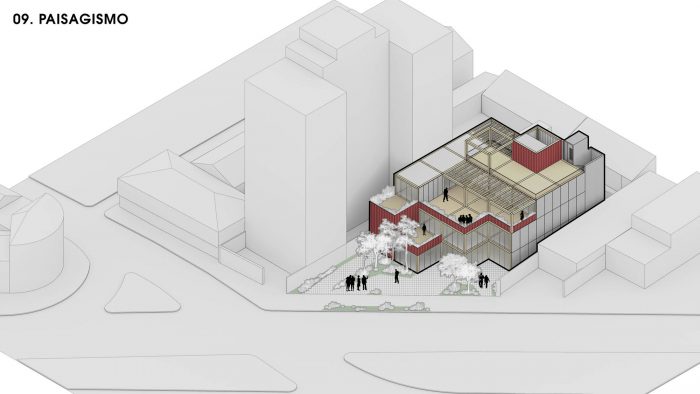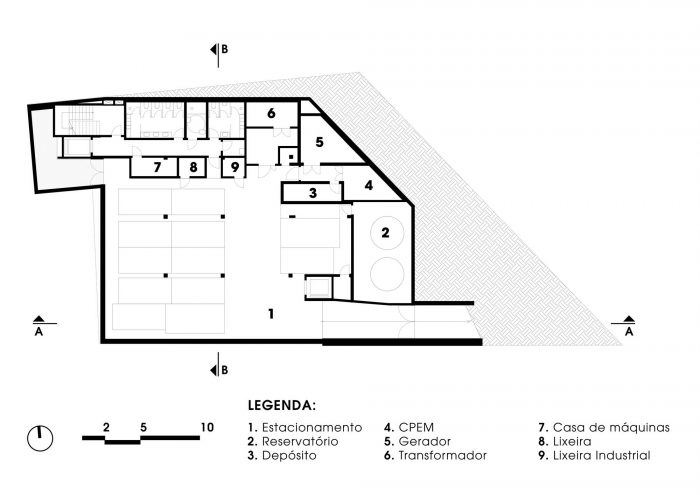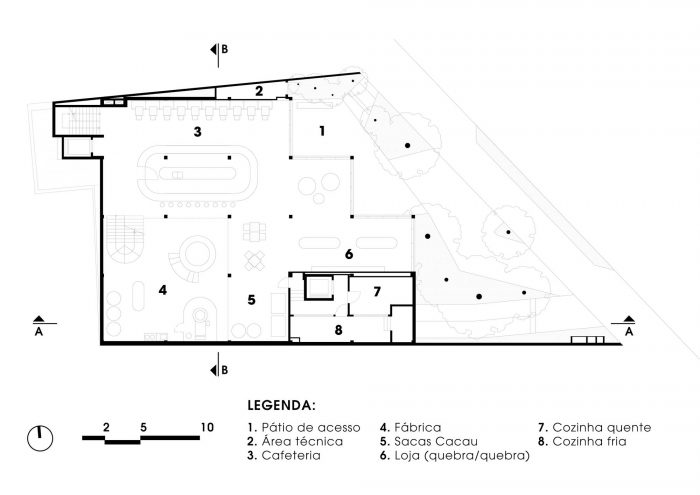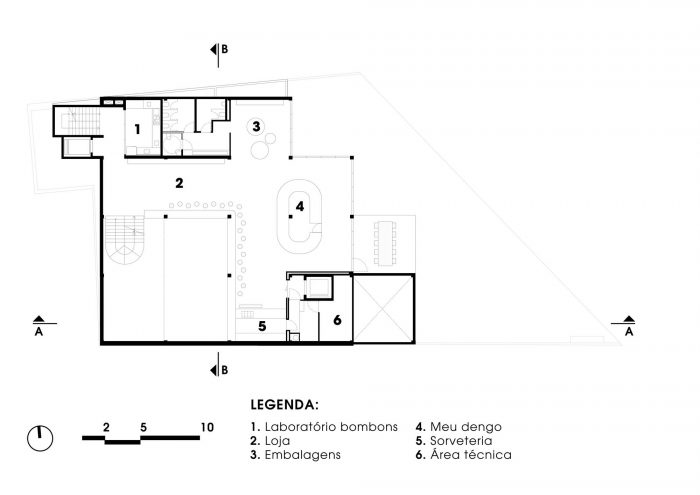Matheus Farah e Manoel Maia Arquitetura (MFMM Arquitetura)负责建造巴西第一座也是最高的木制建筑,位于圣保罗法利亚利马大道。该建筑被设计为高端巧克力品牌Dengo的概念店,共有4层,完全用木头结构,这在巴西建筑和施工行业是前所未有的壮举。
Matheus Farah e Manoel Maia Arquitetura (MFMM Arquitetura) is responsible for the first and tallest wooden building in Brazil, located at Avenida Faria Lima, São Paulo. Designed to host the concept store of premium chocolate brand Dengo, the building has 4 floors and was entirely structured in wood – an unprecedented feat for the Brazilian architecture and construction industry.
该项目使用了Amata的工程木制CLT(交叉层压木材)板和Rewood的Glulam梁和柱。这两家公司都是工程木行业的参考。”这个项目押注技术来审查当前的建筑参数,展示了如何在不落后于美学和舒适度的前提下进行创新,减少环境破坏,促进城市的可持续发展”,Maia说。
The project used engineered wood CLT (Cross Laminated Timber) slabs by Amata and Glulam beams and pillars by Rewood. Both companies are references in the engineered wood industry. “The project bets on technology to review current construction parameters, showing how it is possible to innovate, reduce environmental damage and promote a sustainable development for our cities, without letting behind aesthetics and comfort”, says Maia.
Dengo的概念店占地800平方米,建筑面积1500平方米。体积由空心木方块组成,既能使建筑垂直化,又能传达出通透性和移动性的概念;这一点通过外立面不同位置的战略性减法得以实现。裸露的木质结构和植被有助于营造一种舒适和活泼的感觉,同时也拯救了Dengo的核心价值:与环境和谐共生。透明和开阔的空间,以及泥土色调,自然采光和通风以及木质表面都突出了这些特点。
Dengo’s concept store occupies an 800 m² plot with 1,500 m² of building area. The volumetry is composed of hollow wooden cubes that both verticalize the building and convey the idea of permeability and movement; this is possible through some strategic subtractions at different spots on the facade. The exposed wood structure and vegetation contribute to a feeling of comfort and liveliness, while also rescue Dengo’s core values: producing in harmony with the environment. Transparencies and openings, as well as earthy tones, natural lighting and ventilation and wooden surfaces accentuate these characteristics.
建筑试图以一种有吸引力的、有教益的方式重现巧克力工厂,这样就能突出Dengo的与众不同之处:控制生产过程的每一个阶段(也就是所谓的 “从豆到棒 “的过程)。这包括从巴伊亚州南部的可持续农场生产可可豆(最纯正的巧克力)开始,直到巧克力棒的制作。为了确保这种关怀,该项目设想在一楼安装20世纪40年代的原始修复机械,以展示巧克力的提炼过程。磨坊由豆子供应,豆子通过透明的管道到达,并通过中央中庭,以创造一种魅力,丰富公众的想象力。
The architecture sought to recreate a chocolate factory in an attractive and didactic way so it could highlight Dengo’s differential: controlling every stage of the production process (also known as the “bean to bar” process). This includes since the production of cocoa beans (chocolate in its purest form) in sustainable farms from southern Bahia, until the making of the chocolate bar. To ensure this care, the project envisaged the installation of original restored machinery from the 1940s on the ground floor to show the chocolate refining in loco. The mill is supplied by beans that arrive through transparent ducts and pass through a central atrium, to create an enchantment and enrich the public’s imagination.
在一楼的Meu Dengo车站,顾客可以一边观看,一边为他们特别制作个性化的物品。一楼和二楼提供了桌子和长椅,以满足游客的需求。楼层还设置了透明玻璃和侧开窗,有助于楼层之间的连接,建立起从内到外的视觉关系。还可以到天台,作为城市的观景台来欣赏。
On the first floor, at Meu Dengo station, customers can watch while personalized items are especially and instantly made for them. First and second floors offer tables and benches to accommodate visitors. The floors also have transparencies and side openings, which contribute to a connection between levels and establish a visual relation from inside to outside. It is also possible to go to the rooftop and enjoy it as a viewpoint of the city.
地板带来了红色的陶瓷 “caquinhos”(破碎的碎片),这是圣保罗20世纪40年代和50年代住宅的典型特征。除了向城市传统致敬,唤起人们的情感记忆外,它还提到了著名的 “quebra-quebra “品牌产品:玻璃壁龛内的巧克力板,可以根据客户的订单碎成多少块。”我们试图创造一个空间,在这个空间里,凸显出质朴、不敬、真实和手工制作,基于对自然元素的使用和巴西性概念的当代重新诠释”,Farah称。
The flooring brings red ceramic “caquinhos” (broken shards), typical of São Paulo residences from the 1940s and 1950s. Besides paying homage to the city tradition and evoking an affective memory, it also refers to the famous “quebra-quebra” brand product: chocolate boards inside glass niches that are broken into as many pieces as the customer orders. “We seek to create a space where the rustic, irreverent, authentic and handmade are highlighted, based on a contemporary reinterpretation of the use of natural elements and the very concept of Brazilianness”, claims Farah.
建筑师:Matheus Farah + Manoel Maia Arquitetura.
面积:1500平方米
年份:2020年
摄影师:Fran Parente
制造商:Amata, Rewood
项目组:Polímnia Garro, Andreia Oshiro, Fernanda Miguel, Rafhael Silva, Pedro Benatti, Matheus Aleixo, Alex Pataro, Henrique Costa e Isabella Rosa
Clients:Dengo Chocolates
客户 : Dengo Chocolates
景观:Soma Arquitetos
建筑商:Pedra Forte和Máximo Arquitetura e Engenharia
装置:Greenwatt
基金会:Apoio
家具:Butzke, Carlos Motta, Dpot, Tidelli
Lightning: Mingrone Iluminação
防水性:Omnitrade
视觉传达:Dea Design
城市 : Pinheiros
国家:巴西
Architects: Matheus Farah + Manoel Maia Arquitetura
Area: 1500 m²
Year: 2020
Photographs:Fran Parente
Manufacturers: Amata, Rewood
Project Team:Polímnia Garro, Andreia Oshiro, Fernanda Miguel, Rafhael Silva, Pedro Benatti, Matheus Aleixo, Alex Pataro, Henrique Costa e Isabella Rosa
Clients:Dengo Chocolates
Landscape:Soma Arquitetos
Builder:Pedra Forte e Máximo Arquitetura e Engenharia
Installation:Greenwatt
Foundations:Apoio
Furniture:Butzke, Carlos Motta, Dpot, Tidelli
Lightning:Mingrone Iluminação
Waterproof:Omnitrade
Visual Communication:Dea Design
City:Pinheiros
Country:Brazil

